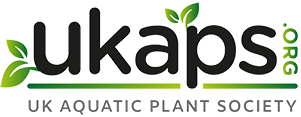George Farmer
Founder
- Joined
- 21 Jun 2007
- Messages
- 6,742
Great looking pond, Darrell! A real visual feast this time of year!
Thanks for sharing.
Thanks for sharing.
Oooh...Oooh...(raises hand...raises handplantbrain said:...So what would occur or would folks predict if he added say some KNO3/KH2PO4 to this system? Algae? Or more weeds/aquatic plants?
Which unfortunately describes most ponds - even the ones I see at garden centers, while their proprietors rabidly try to remove NO3. Tsk..tsk..tsk...plantbrain said:What is dw1305's goal here also? More work and trimming of the plants? Probably not.
So adding ferts is only worthwhile if the plants are really strongly limited and growing poorly.
And this sounds exactly like your standard procedure for aquarium startup. No surprises there!plantbrain said:The key is to pack the pond with plants and allow them to fill in and weedy out the algae while this process takes over.
Many add lots of plants in the spring, then weed good till the plants grow in, this is true for ponds as well as most terrestrial gardens in seasonal climates.
Yes I remember you mentioning this some time ago. I had completely forgotten about it as I tried to source it in UK and couldn't find an inexpensive source. A definite alternative to Excel if it could be had on the cheap. Thanks!plantbrain said:Another product is sodium percarbonate if you want to clean off the stones, very cheap and easy to use. Raises the Kh though. The powder drops on the rocks and dissolves H2O2 and kills the algae and sloughs off the rock. Works really well for this, will not harm plants though, I've tossed it on many species without any effect.
Yes that is right, my aim was exactly the opposite - a pond that I could leave to it's own devices for as long as possible.What is dw1305's goal here also? More work and trimming of the plants? Probably not.



Yes! Lets! 😉BioLogic said:Let us examine some fundamentals here...
No, sorry, this is completely wrong. It could easily be argued that EI generates eutrophication in the tank. Furthermore EI provides strong evidence that eutrophication in a tank, and in some[ water systems, is not correlated with algal blooms. The blooms are more associated with the level of lighting, malnutrition and in some cases, Ammonification.BioLogic said:correct me if I'm wrong but EI is based on a constant exchange of water as would happen in a natural lotic (flowing) ecosystem. In a lentic (standing water) ecosystem that level of input would lead to eutrophication - and the consequent outbreak of algae and proliferation of weedy taxa.
Well, it certainly wouldn't make sense to produce a system outside the tolerance range of the inhabitants. Managing a high tech tank means controlling that tolerance range. This includes a control of the nutrient loading, which is orders of magnitude below the level of intolerance, and managing the CO2 levels, which has a very narrow tolerance limit. All our collective experience illustrates that by a wide margin, it is the CO2 levels that do the damage if poorly controlled. EI nutrient levels do not directly produce toxic effects. Additionally, eutrophic tank water results in increased metabolism and therefore produces high levels of organic waste by the plants themselves. It is this organic waste that is the pollution in the tank, not the nutrient levels, therefore in the typical EI dosing scheme, large water changes are beneficial to both flora and fauna.BioLogic said:A very important principle here is "range of tolerance". All organisms have a range of tolerance - the upper and lower ends of which are stressful. Obviously an assemblage of organisms, in this case plants, is determined by environmental filters. So the in an ecosystem the things that are dominant (in terms of biomass and/or abundance) are those that are best suited to the conditions whereas those that are at either end of their range of tolerance are not doing so well and declining. Change the disturbance or stress regime and the dynamic changes again. What we do in an aquarium is create an environment and populate it with organisms that are comfortable in that range of parameters. Then we introduce a disturbance regime that favours aforementioned organisms and lastly we shortcut the nutrient cycles and add nutrition for the inhabitants. However as stated earlier, we need to manage these inputs in some way otherwise we pollute the system.
Well, in my pond, there was no way I intended to perform water changes. This was not a big deal because the level of plant growth blocked most of the light from entering the water and so this stifled algal growth. There was zero algae in this eutrophic system.BioLogic said:Back to our pond scenario. Unless you are going to constantly add fresh water and dilute the nutrient load you will favour certain plants over others. Fact. I can see that the Typha and Nymphaea are having a jolly good time - because they are gross feeder and have long since outgrown their pots - they are looking for food and they now have it. If you want a pond full of Typha then carry on. Soon enough you'll haver a pond that looks like any polluted waterway - choked with Typha and other weeds. My advice? Re-pot your plants!!!!!










